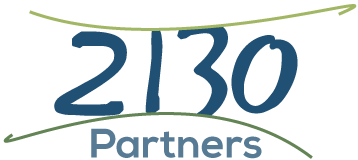 The Pacific Northwest Vistage Chairs have been using a powerful system called “The Enneagram” for their own development and for some of their groups. For those who have not heard of it, The Enneagram has been around since at least the 4th century. It is a system that identifies nine core life strategies, made up of habits of emotion and thought, that each of us uses to navigate life. The Enneagram is quite different from personality tests or even typical diagnostics. It’s a very rich system that gives people access to much deeper self-awareness and the possibility of positive change. Some of the most valuable things I’ve noticed about using The Enneagram are:
The system identifies 9 different enneatypes, or 9 different points-of-view, and that helps create compassion both for self and others. Once you realize that people just have different focuses of attention, that they are reacting from deeply engrained habits, and that you are doing the same thing, other people’s behavior doesn’t seem so unexplainable.
The Pacific Northwest Vistage Chairs have been using a powerful system called “The Enneagram” for their own development and for some of their groups. For those who have not heard of it, The Enneagram has been around since at least the 4th century. It is a system that identifies nine core life strategies, made up of habits of emotion and thought, that each of us uses to navigate life. The Enneagram is quite different from personality tests or even typical diagnostics. It’s a very rich system that gives people access to much deeper self-awareness and the possibility of positive change. Some of the most valuable things I’ve noticed about using The Enneagram are:
The system identifies 9 different enneatypes, or 9 different points-of-view, and that helps create compassion both for self and others. Once you realize that people just have different focuses of attention, that they are reacting from deeply engrained habits, and that you are doing the same thing, other people’s behavior doesn’t seem so unexplainable.
It sheds light on what creates reactivity, stress and upset in yourself and others.
The 9 types are well-documented and once you have identified your type, you will have a custom roadmap for self-awareness and self-development, unlike many of the current “self-help” books and approaches that tend to advocate one overall approach for all.
So why would this be helpful for your leadership? As a leader, if you know your enneatype you will be able to more objectively and readily identify your gifts and strengths as well as your challenges and blind spots. You will gain rich insights into your leadership style from learning which strategy or enneatype you have. You will likely be surprised by much of what you discover.
Why is this helpful for leadership teams? The enneagram can be used to depersonalize issues, create greater mutual trust, respect and safety, and reduce stress, all of which contributes to significantly increased productivity.
Some caveats for using the enneagram. Finding out your type should be an “inside job” of self-discovery. It takes years of training and certification from a credible teaching organization to learn how to facilitate others identifying their own type accurately and effectively. It is neither valid nor ethical to attempt to type others after simply reading an enneagram book or taking a type test yourself.
If you are interested in learning more about the system, one place to start is with Enneagram Worldwide. The founders Dr. David Daniels and Helen Palmer are two of the leading developers and foremost teachers of the system in the world. A good book to start with is Dr. Daniels’ “The Essential Enneagram.” It has a self-test and a very good synopsis of each type that can help you get started investigating your own type. If you are interested in bringing the enneagram into your group or team, be sure to find a certified professional who can do the system justice and give you access to its full power. (In the Pacific Northwest you can use Enneagram in Seattle as a resource.)
